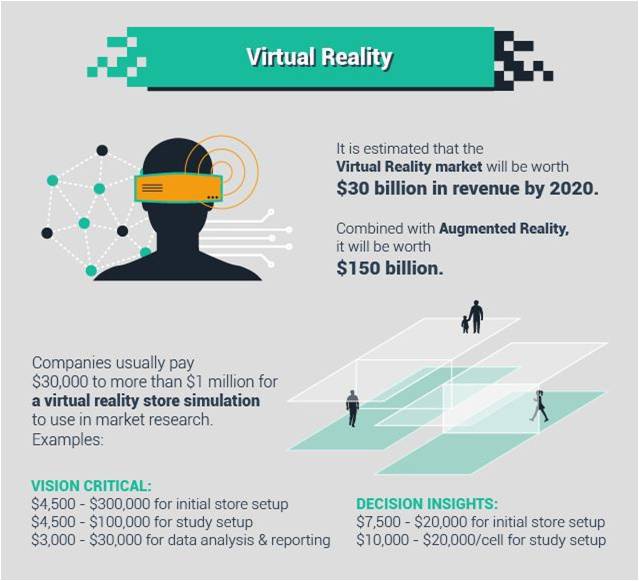 Guest blog by H. E. James, MBA
Guest blog by H. E. James, MBA
Marketing for the nonprofit sector has different end goals than marketing for business. While nonprofits must still meet financial goals in order to survive, the goal of their marketing campaigns is to build relationships.
People do not donate, volunteer their time, or make any other kind of contribution if they do not feel a connection to a nonprofit. When I volunteered as the marketing coordinator for the local branch of Relay for Life (RFL), it was difficult to help prospects make the connection between Relay and their own experiences, even with marketing plans.
Why not offer prospects a new way of connecting, one that brings them closer to the experience than ever before? Virtual reality (VR) can do that for you and your prospects.
No longer just a tool for big-box stores who have been building virtual store simulations for market research for nearly a decade, VR is now more affordable and easier to access for smaller marketers. This makes it a perfect medium for nonprofit marketers seeking to connect with prospects.
VR is All About Showing, Not Telling
Even pictures are becoming inadequate for properly telling a story. When I stump for RFL, I’m often told, “I’m not interested in doing another race.” However, RFL is no race. It’s not even a relay, and not even visuals adequately explain it.
Using VR could help me take prospects to a Relay before one ever happens. Pencils of Promise recently used VR to create the 360-degree film Beginning. Shown at its annual gala, then posted on YouTube360, Beginning takes viewers on an intimate, 360 tour of one of PoP’s schools in Ghana.
The narrator tells viewers about PoP’s mission, which is building schools and creating educational opportunities in Ghana, Guatemala, Laos, and Nicaragua. Simultaneously, the viewer can manipulate the video to view education in Ghana from the point of view of one of the students.
A donor or prospect then becomes part of the experience, almost feeling the hard surface of the wooden benches and the dust of the dirt floor.
RYOT and the Huffington Post have partnered to create unique, immersive virtual reality videos for nonprofits around the world. One of the most compelling is Growing Up Girl, the story of Monica, a 10-year-old girl living in Kenya. RYOT and One.org, the nonprofit that produced the video, show viewers Monica’s daily routine, which includes walking miles from her village into town to find light for her homework.
For many Western viewers, a basic, explanatory video would never have done justice to Monica’s plight. Experiencing a bit of her life in 360 degrees is much more powerful.
VR is More Affordable than Ever
Virtual reality technology still isn’t cheap, at least not if you’re creating complete simulations. It takes a developer to create a complete submersive experience. However, if you do marketing for an organization that helps troops cope with PTSD, you can show donors how VR can and is being used in the treatment of various mental health issues and phobias.
If you’re marketing an experience like RFL or the schools of Pencils of Promise, creating your own videos is as simple as setting up a multi-camera rig. With a few GoPro cameras and some stitching software, and you can have access to 360-degree videos for your targets.
Purchase a hand-held 360-degree camera if you want steadier experience. Regardless of the means, what better way to show donors exactly what it’s like to be a woman in a modern war-torn country than through 360-degree video?
Because video is the most effective marketing tool you have at your disposal, make it as interactive as you can.
If you’re marketing person-to-person, hand out Google Cardboard viewers, customized with your nonprofit’s brand identity and QR code. These inexpensive viewers cost as little as $15 and as much as $40, and can work with phones with screens as large as six inches. You provide the viewer and your donors gain instant access to your VR videos and simulations.
VR Integrates with Other Digital Strategies
Virtual videos are also great for social media and email marketing. Most user-created VR videos are short, making them optimal media for embedding in an email or linking in a tweet.
Do what Pencils of Promise did and share your 360-degree experiences via YouTube 360 and Facebook 360. If you’re publishing your VR experiences on social media channels, don’t forget to tag them as VR experiences. Facebook 360 offers a guide to help you publish your media so that it reaches the widest possible audience, including using trending tags and topics.
There is even a new social network site called vTime which allows users to interact in a completely virtual environment. For now, vTime is a social community with no advertisements, but the potential for interaction could soon allow marketers, nonprofit and otherwise, to build experiences optimized for customers and prospects.
VR is Only Limited By Your Creativity
In the end, how nonprofit marketers use VR is up to the creativity of both the nonprofit and the marketer.
Virtual reality leader Bertie Mills told TechRadar in 2014 that one of the best ways to learn how to use VR was to “be brave, try ideas that seem wild. If you’re choosing VR at this early stage, you will be helping to shape the path of virtual reality in the future.”
Nonprofits are always being brave by working to making the world better. Why not use VR in marketing how you’re doing that?
About the author: Hattie is a writer and researcher living in Boise, Idaho. She has a varied background, including education and sports journalism. She is a former electronic content manager and analyst for a government agency. She holds an MBA and enjoys local ciders and the outdoors. Follow her on Twitter and on LinkedIn.

